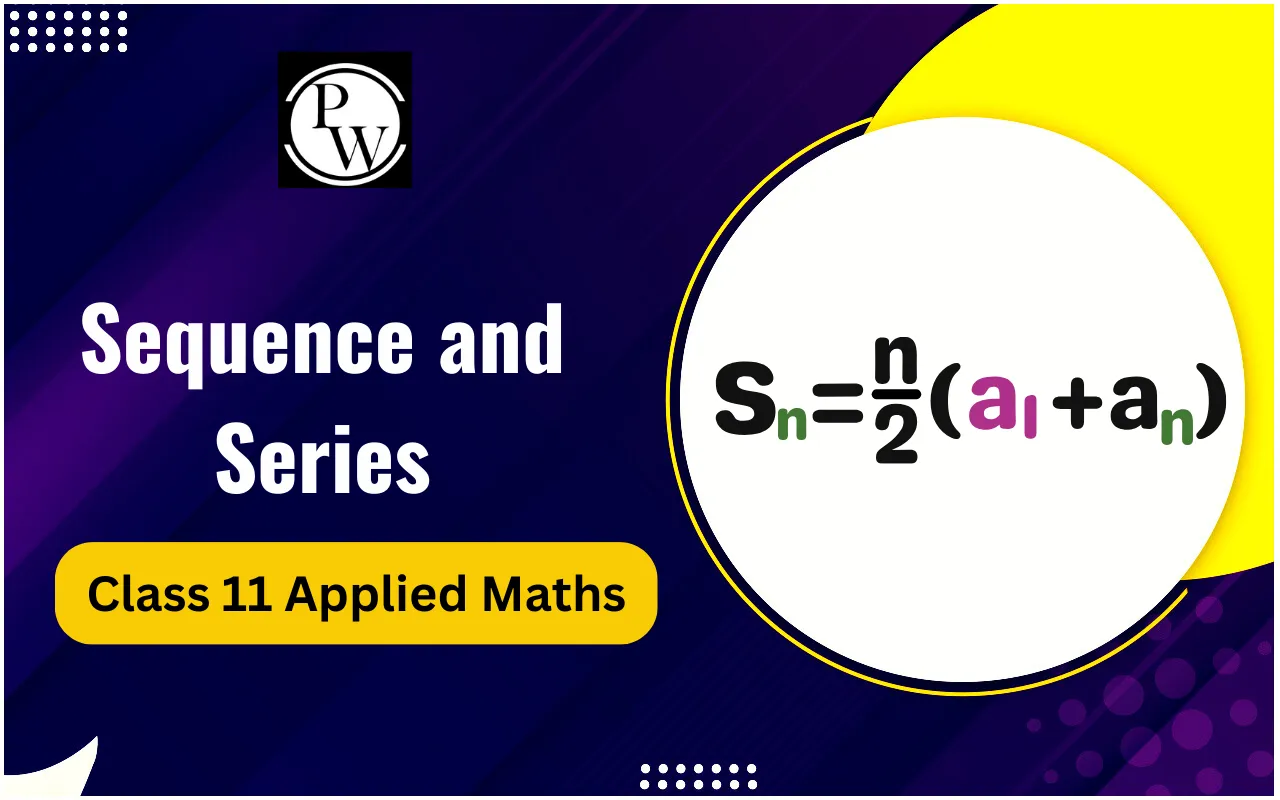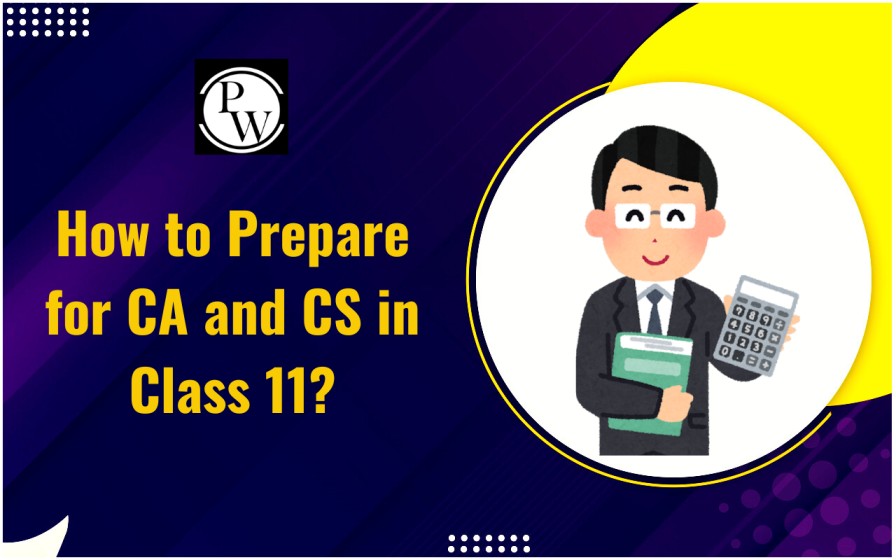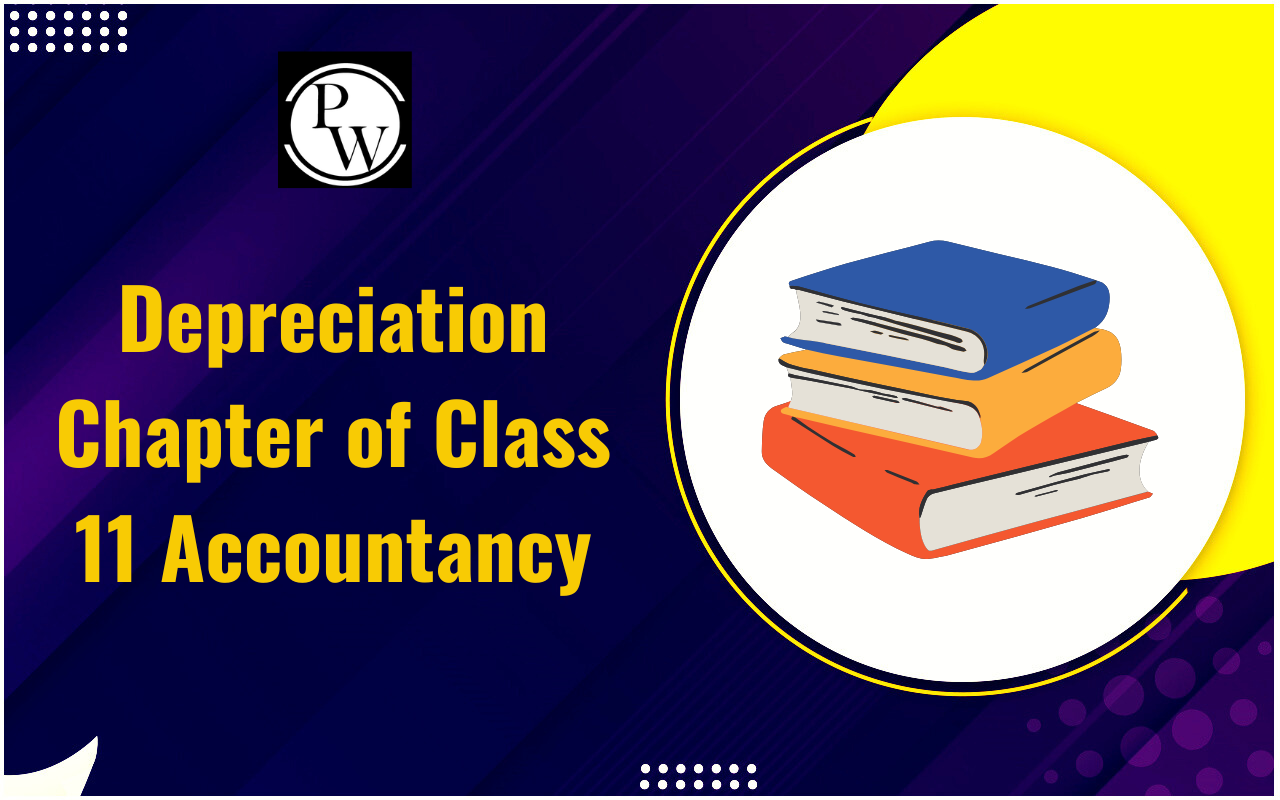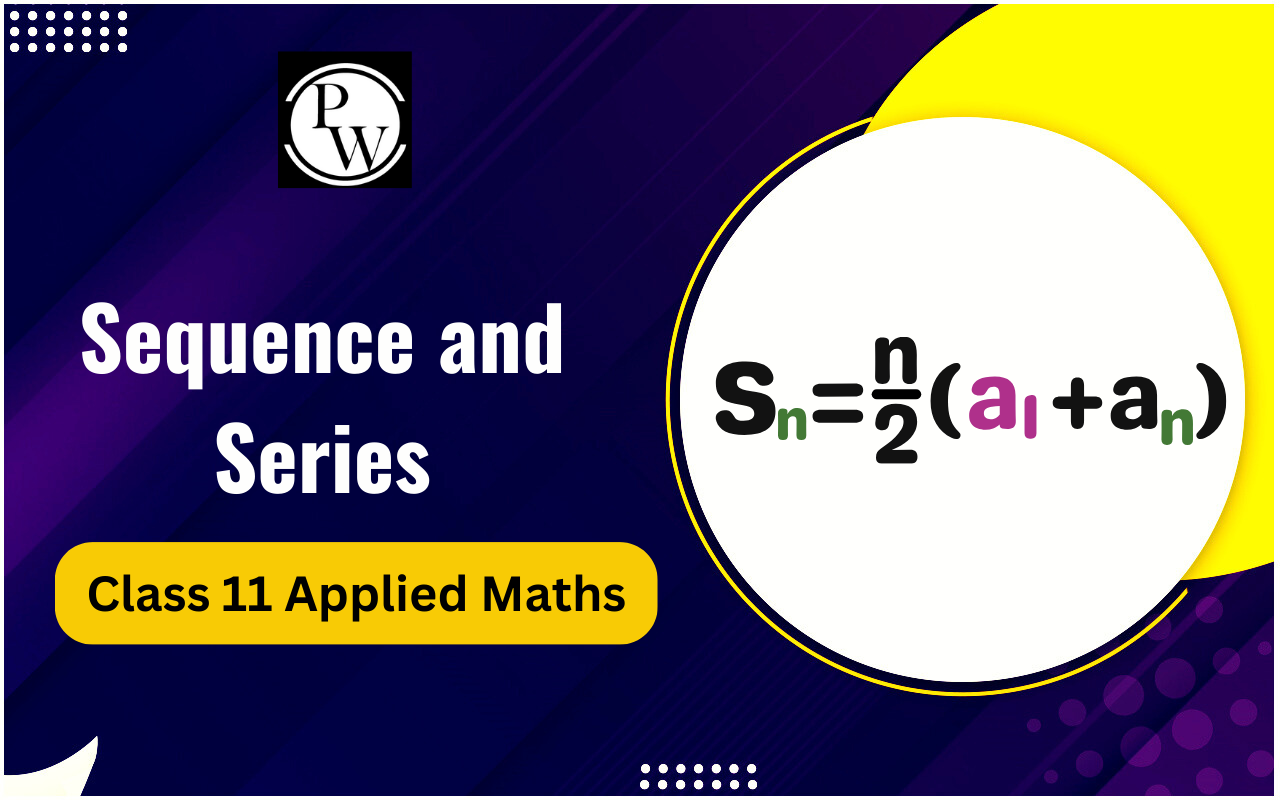
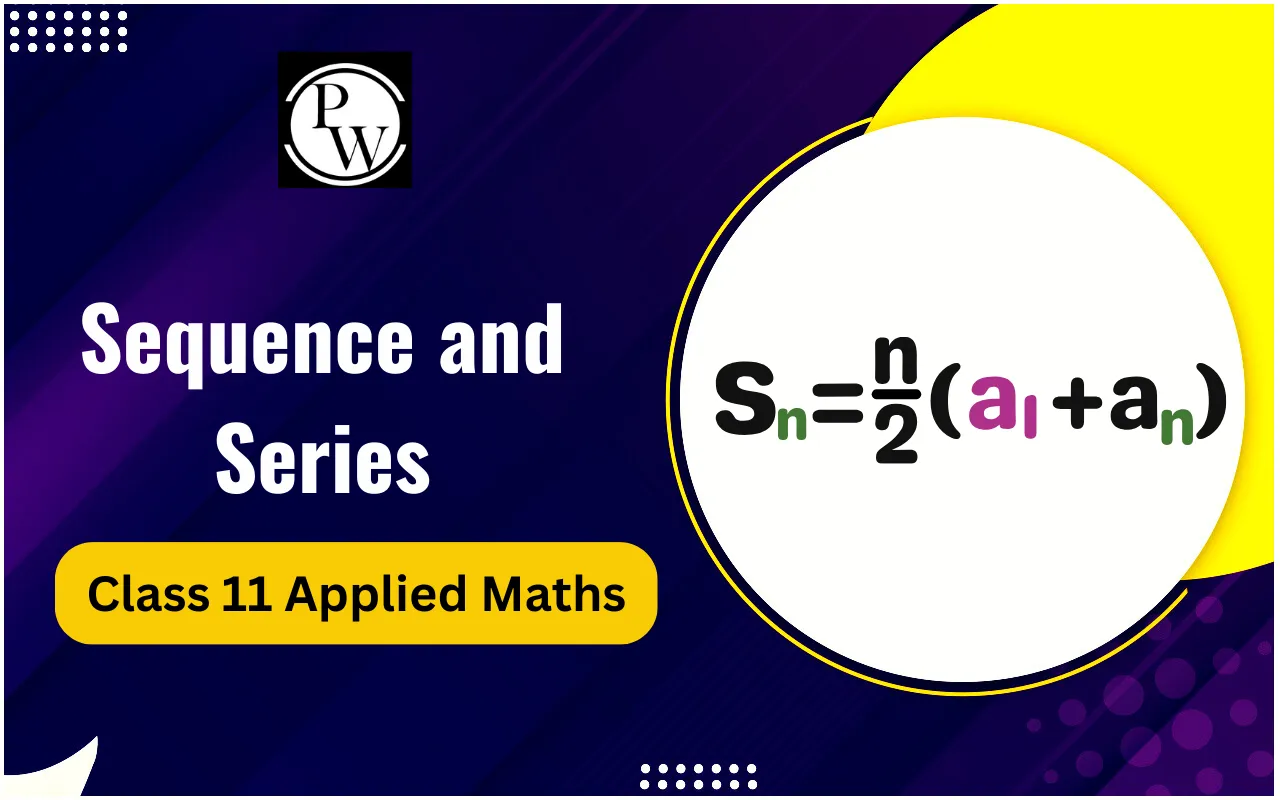
Sequence and Series is an important topic in Class 11 Applied Mathematics. It is the base for many advanced concepts in higher classes and competitive exams. The chapter teaches how numbers can be arranged in a pattern and how we can only calculate terms and sums. Below, we’ve explained the meaning, types, formulas, and problem-solving techniques of sequences and Series most simply.
What is a Sequence and a Series?
A sequence is an arrangement of numbers in a definite order. Each number in the sequence is called a term. For example, 2, 4, 6, 8 is a sequence of even numbers.
A series is the sum of terms of a sequence. For example, if the sequence is 2, 4, 6, 8, then the series is 2 + 4 + 6 + 8.
Understanding sequences and Series is important because it helps in solving mathematical problems where numbers follow a rule or pattern.
Types of Sequences in Class 11
There are different types of sequences that we learn in Class 11. The most important ones are Arithmetic Progression (AP) and Geometric Progression (GP).
Arithmetic Progression (AP): In AP, the difference between any two consecutive terms is the same. This difference is called the common difference. For example, 3, 6, 9, 12 is an AP with a common difference of 3. The nth term formula of AP is given by: aₙ = a + (n – 1)d.
Geometric Progression (GP): In GP, the ratio between any two consecutive terms is the same. This ratio is called the common ratio. For example, 2, 4, 8, 16 is a GP with a common ratio of 2. The nth term formula of GP is given by: aₙ = a × rⁿ⁻¹.
Infinite Geometric Series: If the common ratio is less than 1, then the sum of an infinite GP can be calculated. The formula is S = a / (1 – r).
Also, Check: DEPRECIATION CLASS 11 ACCOUNTANCY
What are the Arithmetic Mean and Geometric Mean?
Arithmetic Mean (AM) is the average of two numbers. If a and b are two numbers, then AM = (a + b)/2.
Geometric Mean (GM) is the square root of the product of two numbers. If a and b are two positive numbers, then GM = √(ab).
There is an important relation between AM and GM. For any two positive numbers, AM is always greater than or equal to GM. This is written as AM ≥ GM.
This inequality helps in solving problems related to optimization and comparison in sequences and Series.
Sequence and Series Problem-Solving Techniques
Problem-solving in Sequence And Series becomes easy if we follow some simple methods. Here are some techniques:
Using nth Term Formula: Many problems ask for a specific term of an AP or GP. Using the formula of the nth term helps in finding the required number.
Using Sum Formulas: Sometimes the question asks for the sum of terms in AP or GP. In such cases, we use formulas for the sum of n terms.
Solving with Roots of Quadratic Equations: Some problems can be linked to quadratic equations. We can use the sum and product of roots to check if numbers form an AP or a GP.
Applying AM ≥ GM Inequality: In optimization problems, applying AM ≥ GM helps to find the correct answer.
Breaking Down Complex Questions: If the question seems large, it is better to divide it into smaller parts and solve them step by step.
Sequence and Series Class 11 Applied Maths Practice Question
Below, we’ve mentioned a simple practice question:
Question: Find the 10th term and the sum of the first 10 terms of the AP: 5, 8, 11, 14, …
Solution:
- First term (a) = 5
- Common difference (d) = 3
- 10th term, a₁₀ = a + (n – 1)d = 5 + (10 – 1) × 3 = 5 + 27 = 32
- Sum of first 10 terms, S₁₀ = (n/2) × [2a + (n – 1)d] = (10/2) × [10 + 27] = 5 × 37 = 185
So, the 10th term is 32, and the sum of the first 10 terms is 185.
Common Mistakes to Avoid in Sequences and Series
Students often make mistakes while solving sequences and Series. Here are some points to keep in mind:
Confusion between AP and GP: Always check whether the difference or ratio is constant before deciding the type.
Forgetting Formulas: Students often forget the formulas for the nth term or the sum. It is important to revise them regularly.
Wrong Substitution of Values: While solving, many errors occur due to incorrect substitution of values. Always check the values of a, d, and r carefully.
Misuse of AM ≥ GM Inequality: The inequality is valid only for positive numbers. Applying it to negative numbers leads to wrong answers.
Not Practicing Enough: Many students only read formulas but do not practice questions. Without practice, it is difficult to apply formulas in exams.
Sequence and Series is an important topic in Class 11 Applied Maths. It explains how numbers follow a pattern and how we can calculate their terms and sums. By understanding types of sequences like AP and GP, and by practicing formulas, students can solve problems with ease. Concepts like the Arithmetic Mean and the Geometric Mean, along with inequalities, add more depth to this chapter. With proper techniques and regular practice, mastering sequences and Series becomes simple for every student.
Sequence and Series FAQs
What is the main difference between a sequence and a series?
How do I identify if a given sequence is an AP or GP?
What is the formula to find the nth term of an AP and GP?
What are the common mistakes students should avoid while solving Sequence And Series problems?

